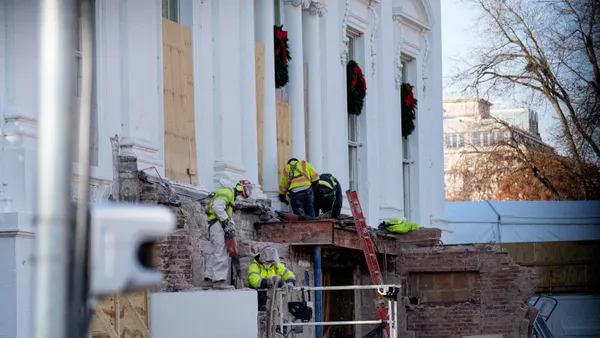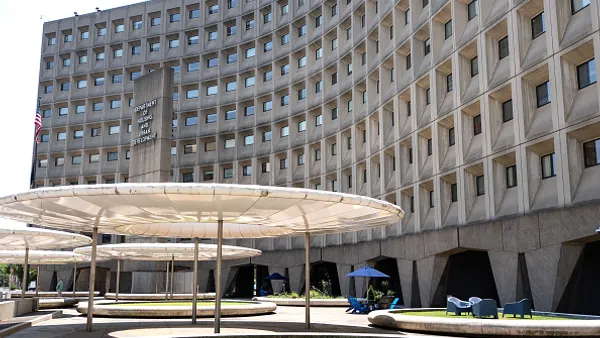Dive Brief:
- New York City construction trade organizations and industry leaders said Mayor Bill de Blasio’s temporary crane restrictions, instituted after a deadly crane accident earlier this month, are crippling construction operations across the city.
- The groups have appealed to City Hall for a re-examination of the new regulations, according to Crain’s New York Business.
- The city now requires that cranes be safely stored whenever there are sustained winds of 20 miles per hour or more. However, industry representatives said the wind reaches that threshold frequently, and the constant starting and stopping of operations is having negative logistical and financial consequences for businesses.
Dive Insight:
After the crawler crane accident earlier this month, when the almost-600-foot machine collapse onto the street, city officials shut down all crane operations until equipment could be inspected. City officials said they are now working on developing long-term crane safety measures.
"This threshold has had a disastrous impact on the industry," William Shuzman, executive director of the Allied Building Metal Industries, told Crain’s.
Shuzman said that crane manufacturers rate the top wind speeds at which their machines can be operated safely and that many crawler cranes are approved to operate in winds higher than 20 miles per hour. In addition, he said, constantly raising and lowering crane booms may create an altogether new and even greater safety concern.
Shuzman said that he has received no response to his concerns from the city, but Crain’s reported that other industry groups are now getting involved. "I think the city has effectively responded to the emergency and has stabilized the industry," Building Employers Trade Association head Louis Coletti told Crain’s. "Now it is time to discuss what the right standard is."
A de Blasio administration spokesman said industry organizations will not be a part of the group making recommendations for long-term crane safety rules, but that they would be consulted.
The incident earlier this month brought renewed focus to concerns of construction equipment safety in New York and across the U.S.













